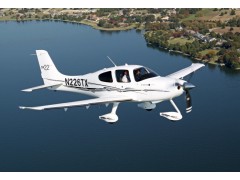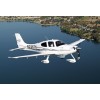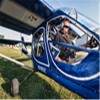In 1951 it was determined by the United States Air Force that the Sierra Nevada Mountains would be a great place for survival training. The USAF Survival School moved to the Stead Air Force base on May 29, 1951. Now, 60 years later, the Aerobatic Company and Flight School, Inc returns survival training to the Reno Stead Airport. These programs are designed for general aviation pilots and their passengers.
On August 7, 1997, about 0800 Pacific Daylight time, a Piper PA-18 airplane, N123AB, sustained substantial damage when it impacted trees about 100 miles northeast of Reno, Nevada. The commercial pilot and single passenger were uninjured. Visual meteorological conditions prevailed at the time of the accident, and a flight plan was filed with a local hunting guide. The pilot stated that he made a low pass over a sand bar, and the airplane was upset during a turn by a wind gust, causing a wing to strike a tree. The pilot and passenger comfortably awaited a rescue effort that took 32 hours. The aforementioned accident was, of course, fictitious. But it could happen to you. Will you be prepared to survive a forced or emergency landing? Every pilot knows that flying requires preparation. The need for a thorough flight plan could not be greater than for a trip into mountainous terrain or remote areas like Nevada. The scarcity of roads and facilities, the rough terrain, and vast distances between communities demand forethought and planning. Emergency Survival Gear and the knowledge of how to use that gear is essential.
Tim Brill conducts Aviation Survival courses here in Nevada or at your location. Please contact him for a quote.
Course Outline:
The Survival Triangle
Awareness
Mental Elements
Elements
Initial Assessment:
Cold Injuries
Quick guide to Anatomy and Physiology
Hypothermia
Immersion Hypothermia
Hyperthermia
Frostbite
Trench Foot and Immersion Foot
Dehydration
Cold Diuresis
Sunburn
Snow Blindness
Constipation
Carbon Monoxide
Shock and Bleeding
Wilderness Wound Management
Airway and Obstruction, Respiratory Arrest, Cardiopulmonary Resuscitation
CPR Considerations for Remote Environments
Food Sources
Travel
Signaling
Clothing and Equipment
Hygiene and Animal Hazards
Shelter, Fire and Water
Aviation Survival Kits
Improvising plane parts for survival equipment
Weather Signs; 10 Rules of Survival; Questions.
Practical:
Day 1 of 2 day Survival practical
Day 2 of 2 day Survival practical. We will return to civilization at 3:30pm for a shower and evening party at a local establishment of dubious repute.






